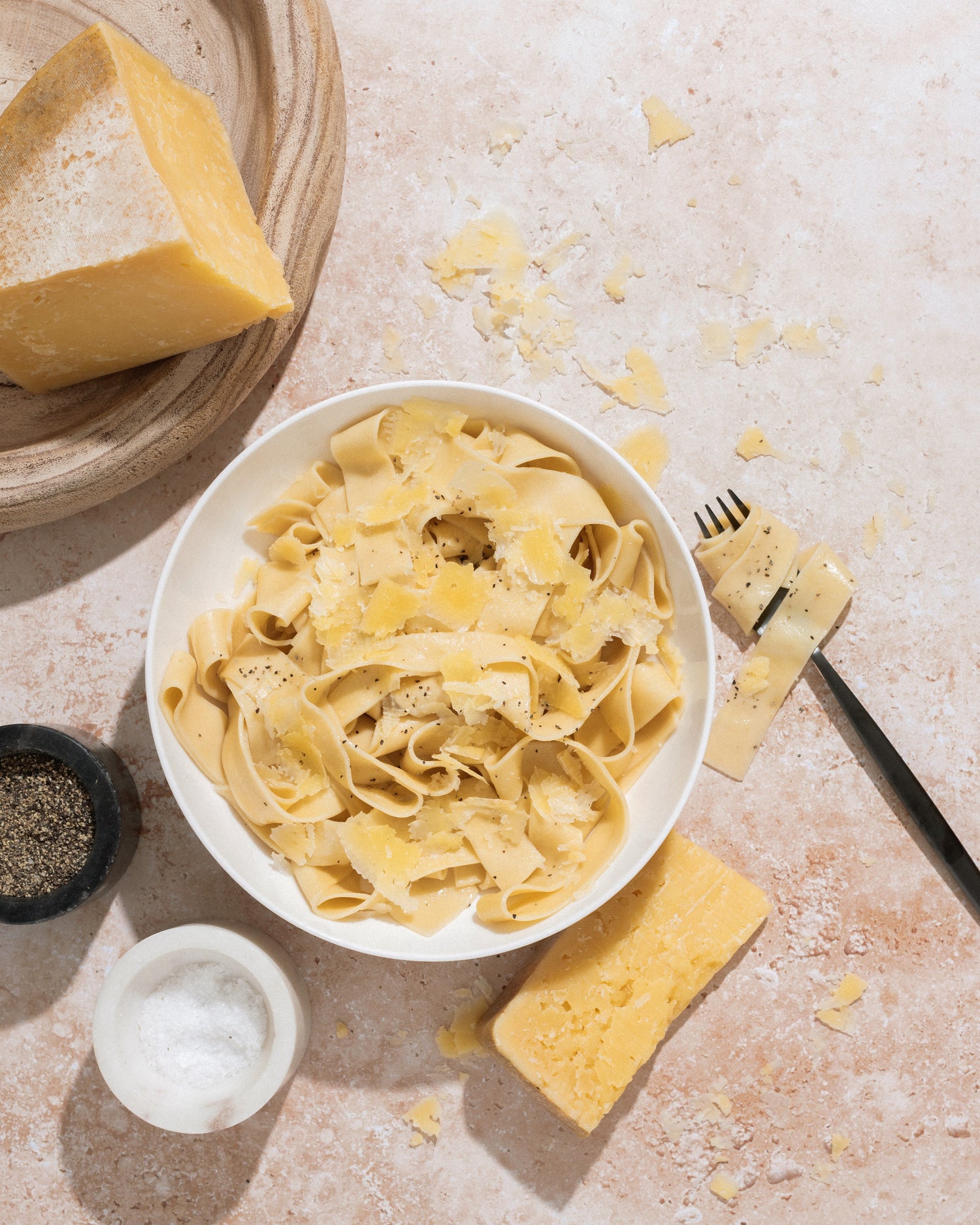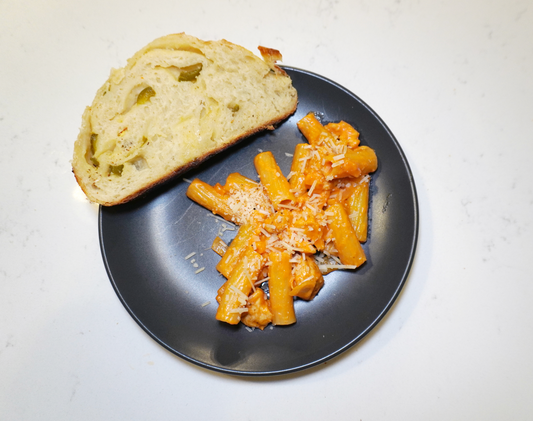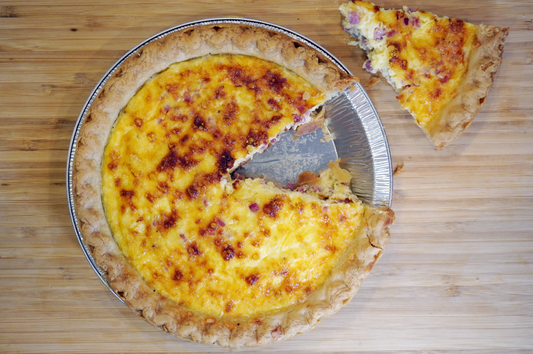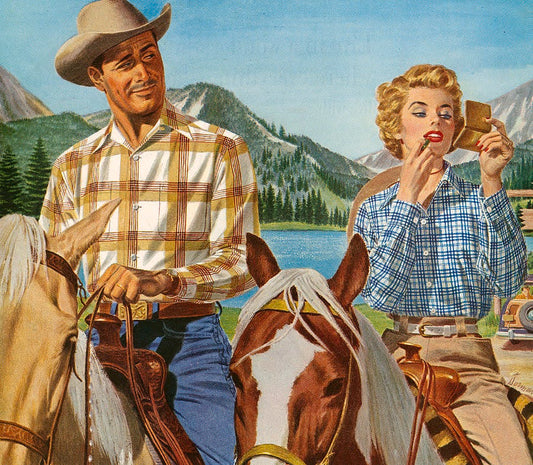It is mid-April, several weeks into the COVID-19 pandemic, when I get an email from my dad with the subject line Ramen. Even under normal circumstances it is not unusual for me to get emails from him that are food related. I also have emails in my inbox with the subject lines of Butter, Punjabi Dal Makhani, Kombucha, Sauerkraut, Soda Bread, and Cows in Grasslands.
An engineer, my dad is detailed and process oriented. I think he has come to recognize that with my own love of food and food systems, I am a more willing audience than my mom to the results of his culinary experimentation. With my dad working from home, it seemed, like so many, that he had an abundance of time to play in the kitchen; hence emails about his sourdough starter and ramen noodles.
For a guy in his 60s my dad is remarkably up with the times. He actively participates in a local alternative energy group, has attended ally trainings through his church, and is often more familiar with social media trends than I am. His email wasn’t just about ramen, it was about cheesy ramen––the packaged noodle and American cheese food fad that hit Facebook and Twitter when we all started eating out of our pantries mid-pandemic.
Articles like “I Tried the Ramen and American cheese Recipe that Twitter is so Obsessed With and Now I’m a True Believer” published on Insider cite the New York Times’ 2018 recipe as what started this craze, but the history of ramen noodles with American cheese actually dates back to the days following the Korean War when American soldiers’ rations, including American cheese which had a longer shelf life, flooded Korean markets. I can thank my dad for the context as he sent in his email the Washington Post recipe with this tidbit of history. The recipe also inspired his own ramen and American cheese creation topped with an egg, green beans and green onions.
Many Koreans, like the food writer Noah Cho, are fierce defenders of cheesy ramen, something of a Korean comfort food. In his 2018 article “I’ll Fight Anyone Who Says You Shouldn’t Put Cheese on Your Ramyun,” Cho writes about the difference between packaged ramen and the types of noodles one gets at fancy ramen shops, claiming that a package of Shin Ramyum with American cheese is a truer representation of the utilitarian spirit of ramen in many Asian countries:
I wish ramen would go back to what it was for me as a kid: comfort food, something for the dark night of the soul. [...] Shin Ramyun with cheese, egg, and green onion is still my preferred way to medicate myself after a trying day. Sometimes I don’t even bother with the egg or green onion; instead, I just go for the cheese, broth, and noodles. When it’s cold and I don’t want to do anything or go anywhere, I take comfort in knowing that a pristine package of Shin Ramyun is always waiting for me in my pantry, its spicy charms calling out to me.
Given that cheese is our business at Rockhill, I put my dad and myself up to using Rockhill cheese in ramen noodle creations. He and I took different paths on our explorations––he added Rockhill cheese to packaged ramen, where I made ramen from scratch. This, incidentally mirrored conversations like those in Cho’s article surrounding processed versus artisanal food that both ramen noodles and cheese exemplify.
My dad took the Washington Post packaged ramen recipe and replaced the called for American cheese with Rockhill’s Dark Canyon Edam. Here was his report:
Definitely a different experience. The American cheese quickly melted and turned the broth into more of a cream soup. The Dark Canyon Edam melted, added some flavor to the broth, but also hung on to some noodles and my fork (yes, I eat this with a fork), and gave me chewy cheesy bites.
My dad's bowl of ramen.

He also noted––proof of my claim that he is detail oriented––that he used about one ounce of Edam as, “after I cut it [the American cheese], a slice weighed about 0.9 ounces.” And, well before he knew I’d be writing about his ramen adventures, he also added the note, “If I were doing a social media shoot, I'd thin slice a red bell pepper or julienne a carrot to give the soup a color accent.” See what I mean about him being up with the times?
I, however, followed a bon appetit recipe “I Can’t Believe it’s Vegetarian Ramen.” It’s not that I don’t love packaged ramen. I actually quite miss sitting down to a bowl of it. I make my own ramen these days, not only because I am a vegetarian, but also because most packaged ramen contains monosodium glutamate (MSG), a food additive that provides a satisfying umami flavor, but is a migraine trigger for me.
The bon appetit recipe was involved. To make the broth, I started by sautéing the white and light green parts of several green onions with a one and a half inch piece of ginger, sliced. Next, I added mushrooms (the recipe called for dried, but I used fresh) and seaweed strips and cooked until the mushrooms softened and the mixture became fragrant. At this point, I added the water, bringing the entire mixture to a boil. The trick to the ramen broth was straining out all of the solid bits (onion, ginger mushrooms and seaweed) and pureeing them in a blender, before re-incorporating them into the broth. Although there were many steps, they were simple and well worth it.
Fancy ramen ingredients and toppings.

Just like my dad, I had a variety of toppings for my own ramen: eggs (jammy soft-boiled style), bok choy, slices of yellow bell pepper, green onion, a delightful red pepper and garlic oil from the bon appetit recipe, and of course Rockhill cheese.
While my dad used a piece of Dark Canyon Edam that was aged for over five months, I used a younger piece of Wasatch Mountain in hopes of better melting. My dad, trying to stay true to the ramen prep instructions for American cheese slices (either place on the noodles whole or rip into pieces), put thin strips of Edam in his ramen; whereas I grated the cheese in hopes of getting that creamy broth.
Based on my dad’s picture of his ramen with Dark Canyon, it did seem as though going with the younger, grated cheese helped create a creaminess, but Rockhill cheese won’t ever behave quite like American cheese.
American cheese is actually a variety of older cheeses grated up and mixed back together with the addition of an emulsifier that gives American cheese its silky consistency, aids in its melting and serves as a preservative. In contrast, each batch of Rockhill cheese is made with a single batch of milk sourced from Cache Meadow Creamery that has nothing added to it other than cultures, rennet and salt, the elements (plus heat) of the cheese making process.

Where American Cheese has its shelf life as a result of added preservatives Rockhill cheeses have shelf life because of a variety of factors such as proper moisture, salt-level, pH, microbes in the cheese, as well as temperature and humidity in the aging cave, all which contribute to the development of their natural rinds, as the cheese ages in our cave for months or years. Cheese, however, loses moisture with time––think about the difference between mozzarella and parmesan––which results in the drier texture of aged cheeses and changes their melting properties.
That said, I found the Rockhill cheese to add a level of comfort to my bowl of soup and to create that half ramen half mac and cheese experience highlighted with the American cheese addition. I took Cho’s suggestion to pull the noodles up through the layer of melted cheese, which caused it to cling to my noodles. It was the best bowl of ramen I’d ever made.

You don’t have to take my word for it.
When I asked my partner, A., how the ramen was she said, “This was probably the best bowl of ramen I’ve ever had at home.” This is coming from someone who eats a bowl of Maruchan chili ramen noodles supplemented with an egg, broccoli, frozen peas and peanut butter about once a week.
“That’s great,” I said. “But what do you think about the cheese?”
Her response (entirely unprompted, promise) was, “I’ve always believed in putting cheese on ramen, but the Wasatch Mountain makes it better.”





